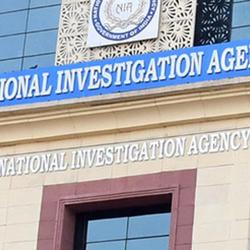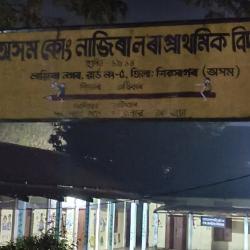Assam Police arrested a man with three tockey geckos November 10 at Paltanbazar area of Guwahati , the capital city of Assam. Now it is not only rhino horn, ivory or bones of tiger most valuable for poachers and smugglers of wildlife parts of the state of Assam in Northeast India. It is the 20 inch long tokay geckos too which are fetching crores. The exorbitant valuation of geckos came to the fore recently when Dima Halam Daogah (DHD) chief Dilip Nunisha was arrested earlier by Dispur police along with two colleagues. Despite grave threats posed to mega species such as tiger, rhino and elephant by the multi-billion dollar illegal trade in wildlife is well known, but not many would be aware that a number. When it comes to the value of the value of an animals in the international market, forget big animals like rhino, elephants and tigers as it is the tiny tockey geckos which are now fetching cores. The exorbitant valuation of geckeos came to the fore recently when Dima Halam Daogah (DHD) chief Dilip Nunisha was arrested by Assam Police at Dispur along with two of his associates for allegedly attempting to smuggle a gecko.

Dehorned rhino. Photo by Biju Boro
Most of police and forest personals are also ignorant about its price untill Nunisha was arrested. The shocking revelation about the huge monetary value of geckos came to the fore only after interrogating Nunisha and his associates. Police came to know that in international markets, one gecko fetches up to Rs. 3 to 4 crore. The police investigating the case said that in fact, Nunisha's deal was not fruitful because he had sought Rs. 50 lakh, while the party was willing to give only Rs 25 lakh. Tockay gecko, which is a nocturnal reptile found in most parts of Asia, grows up to 40 cm in length and is easily identifiable for its orange spotted blue grey skin skin. It is also known for its strong vocals and it derives its name from the loud croak it made. The reason behind the high price it fetches is that in South East Asian countries like Thailand, Vietnam, Malaysia,etc and China people believe that geckos have medicinal qualities. People hold notions that geckos have the ability to cure cancer, AIDS and even impotency. Also it serves as a drug, which, it applied in mild dose, can create sensation.
However, geckos being small in size and easily available are available are also going against it. Geckos are easily available in all the forests in all the forests of Assam and even Guwahati city. Poaching them is much easier than poaching big animals like elephants, rhinos and tigers.
In a time when India is to promote conservation of wildlife and forests, the alleged police link in Indian rhino-poaching, a matter of serious concern Relation of a senior cop with a person involved in rhino horn dealing and illegal money collection from trucks involved in sand mining came to light in a letter written by the Superintendent of Police (SP) of Karbi Anglong district to the Director General of Police, the Assam Tribune, an daily from Guwahati reports.
The Karbi Anglong police also disclosed that, at one point of time, PSO (Personal Security Officer)s were provided by Karbi Anglong police themselves to the person involved in such crimes. In the letter to the Director General of Police, the Karbi Anglong SP said that one Alex Singh, who was involved in illegal collection of money from sand carrying trucks in Dillai Police Station area, was staying in a police building near the residence of the Superintendent of Police during the tenure of Anurag Agarwal as the head of the police force of the district, and that he also acted as a informer to the police. He left the district immediately after Agarwal was transfered from the district.
The letter said Alex Singh was involved in collecting Rs 200 from each sand carrying truck without giving any receipt and there has been a case registered against him. “Agarwal rang up the officer in charge of Dillai Police Station and me and said that the gate was an authorised one and receipts would be given to the drivers of the trucks later after the same is printed".
The letter revealed that in October last year, one sub inspector Mwblik Brahma was sent to Guwahati to nab Alex Singh and after some time, the Additional SP Bolin Deuri was also sent to the city with the same purpose. In the afternoon of October 4, last year, Singh was spotted by the SI with Agarwal, the Additional DGP, CID.“Immediately after getting the information, I rang up the Additional DGP, Law and Order giving details and requested him to provide at least two police constables to nab Singh. He advised me to contact the Additional DGP, CID. Accordingly I contacted the Additional DGP, CID and he was not in the office and advised me to contact the police guards kept in the CID office for help,” the letter said.
The SP informed the DGP that Singh, managed to escape from the scene by the time along with two armed PSOs. Both the SI and the Additional SP gave separate reports on the incidents, which were also forwarded to the DGP. The PSOs provided to Singh later came to Diphu quietly, deposited their weapons and disappeared, the daily said. Several other cases were registered against Alex Singh under Inndia Penel Code and Arms Act,” the letter said and gave details of the cases. The SP further informed that in September last year (2012), Alex Singh was spotted when he came to Misa in Nagaon district in a black Xylo vehicle to fetch a rhino horn. The source further revealed that he was still maintaining relation with Agarwal, the DIG of CID.
This revelation has come as a shocker to everyone concerned with conservation. Unfortunately, Agarwal is also a recipient of the President’s Police medal. People feel the matter needs to be strongly dealt with so that people continue to have faith and respect the men in uniform and the Chief Minister Assam the head of the state Police department, has taken no action against Agarwal in this regard.
On the other hand police nabbed five poachers and recovered huge cache of arms, including an AK 56 assault rifle, and ammunition from their possession in Karbi Anglong district in the month of October, 2012. Police seized arms and ammunition included the AK 56 rifle with 37 rounds of live ammunition, one .303 rifle and seven rounds of live ammunition and a single barrelled muzzle gun. The recovery of the AK series rifle from the possession of the poachers indicated the involvement of militant outfits in the rhino poaching. A detailed interrogation of the five revealed more about the allege nexus between the poachers and militant outfits. The poachers normally use the .303 rifle. Most of the militant outfits in the region use AK series rifles. Senior officials of the Assam forest department had earlier hinted involvement of the Karbi Anglong based militant outfit Karbi Peoples Liberation Tigers (KPLT) after horns of two rhinos were chopped off the alive animals near the Kaziranga National Park last month. A total of 42 rhinos were killed in and around the national park that year out of which 15 were killed by poachers.
The nexus between poachers and the terrorist organisation (Karbi People’s Liberation Front) was confirmed first with the arrest of a poacher from Ketoterong village in Karbi Anglong district in 2012. A .303 rifle and a silencer were recovered from his possession. The poacher, Borsing Tisso, revealed during interrogation that the outfit had supplied him with the rifle and the silencer. KPLT militants directed Tisso to kill rhinos and armed him with the rifle and the silencer,a police officer at Rongbong Bey police station in Karbi Anglong said. He said based on information, a raid was conducted at Tisso’s house in the wee hours on April 26. He said though the poacher confessed that the rifle and the silencer were given to him by the KPLT (Karbi Peoples Liberation Tigers).
Karbi Anglong additional superintendent of police Bolin Deuri said three arrested poachers — Borsing Rongpi, Hoising Fangso and Larsing Tisso — revealed during interrogation that a senior leader of the outfit, Rong Rongpi, took the horn of a rhino that they had killed. Case number 69/2012 was registered at Borpathar police station in this regard. The three poachers had shot and injured a rhino at Hawar under Borpathar police station in November, 2011, with a country-made rifle. Rong Rongpi was present near the area where the rhino was shot at. He, along with other members of the outfit, arrived on the spot and shot the rhino with AK-47 rifles.
Rong Rongpi took away the horn and later paid Rs 50,000 each to the three poachers. A forest official at Kaziranga National Park said the involvement of Karbi militants was almost certain in most of the incidents of rhino killing in Karbi Anglong. Forest personal recovered empty cartridges of AK-47 rifles from the incident sites where rhinos were killed in Karbi Anglong and at Burapahar range, adjacent to the district. Since only militants use AK-47 rifles, the involvement of them in poaching is certain. The park, with more than 2,000 rhinos, has witnessed the killing of 36 rhinos this year.
Apart from these, a nexus between a section of forest guards and poachers involved in rhino poaching in Kaziranga National Park had come to light with the arrest of seven persons, including a retired forest guard in May 2010. A police operation was launched in Bokakhat area of Golaghat district, Assam and three persons traveling with a rhino horn to Dimapur in neighbouring Nagaland were apprehended. Based on their interrogation four others, including a retired forest guard, were apprehended from two villages. Later, the joint team of police and forest personnel raided the residence of another forest guard, Tarun Ganak, and recovered Rs. 2.97 lakh though he managed to escape. Ganak was a casual worker in the forest department and is deployed at Kohora range of the Park. A rhino horn, a vehicle and Rs. 3.95 lakh was seized from the poachers. The poachers were identified as Majibur Rahman, Manik Ali, Bijan Das, Anant Baruah, Lakhi Barua and Nabi Hussain.
It is pertinent to mention that following the confession of the poachers arrested by Golaghat forest officials the SP Golaghat ordered an inquiry against the allegation of police-poachers nexus . The SP Deepak Kumar ordered the SDPO Bokakhat to submit his report within 24 hours. According to source, the poachers Bipul Kaman and Nomal Doley arrested by the forest team led by D F O Diganta Barbaruah diclosed several sensitive information. Their unholy nexus with the police has created a sensation among the nature lovers as well as the administration. The poacher Nomal alleged that Dasiram Pegu one of the member of the gang paid Rs. 1 lakh to the OC Kamargaon PS Prema Phukan through one police personnel Umakanta Pegu. However the OC denied the allegation. It is pertinent to mention that a beat officer of Golaghat Forest Division filed an FIR against three poachers namely Bipul Kaman,Chandra Mili and Chidananda Mili in October last year. But the police did nothing against them, and Bipul killed the female rhino on December 25, 2012.
The state government has been drawing flak due to rising incidents of poaching, which has claimed 40 rhinos so far in 2013. Chief Minister Tarun Gogoi has already asked the police to help forest department officials to prevent poaching but no action has been taken against DIG Mr Agarwal with double standard. Assam Environmental NGO Forum said the the Forum is demanding an inquiry by the CBI or the NIA into the matter. The NGO Forum said that the Forum demands that the officer should be stripped off his Police medal at once. In May, the Forum approached the Forest department for introduction of new anti-poaching technology viz., ‘e-Eye TM’ in the Kaziranga National Park (KNP) to deal with poaching and other illegal activities. The Centre has also approved the installation of the electronic eye in KNP.
The Assam Tribune, a regional daily laments sophisticated modus operandi of the wildlife criminals running the flourishing global rackets warrants a matching response from the government authorities. The protection of wildlife and their habitat has also to be recorded top priority for achieving the long term goals of conservation. Enhanced patrolling, strengthening intelligence and enforcing the law will be critical to the success of the fight against wildlife trade.What is needed is an integrated and multi-pronged strategy involving trained manpower, intelligence gathering, hard crackdown on poachers and wildlife smugglers and their conviction, strict enforcement wildlife laws and reducing forest fringe inhabitants dependence on forests. Another imperative need is to bring the vast expanses of reserve forests- many of which still forests- under tight vigilance and security.
Assam and other parts of the North East India are losing much of invaluable natural bequest with the wildlife crimes assuming alarming dimensions. While habitat loss poses the gravest challenge to the continuance of many species in the region, no less disquieting is the spurt in poaching and illegal trade in wildlife body parts. Though the menace is nothing new, it has attained dimensions which are far bigger than in the preceding decades. Startling revelations vis-a-vis poaching of mega animals such as tiger, rhino etc, have put renewed focus on the sinister syndicate of illegal trade of wildlife parts. Another disturbing trend relates to the poaching and capture of lesser animals, including reptiles, birds, as many such ' less glamorous' wildlife command an equal demand in the illegal trade.
- 15738 reads










Add new comment